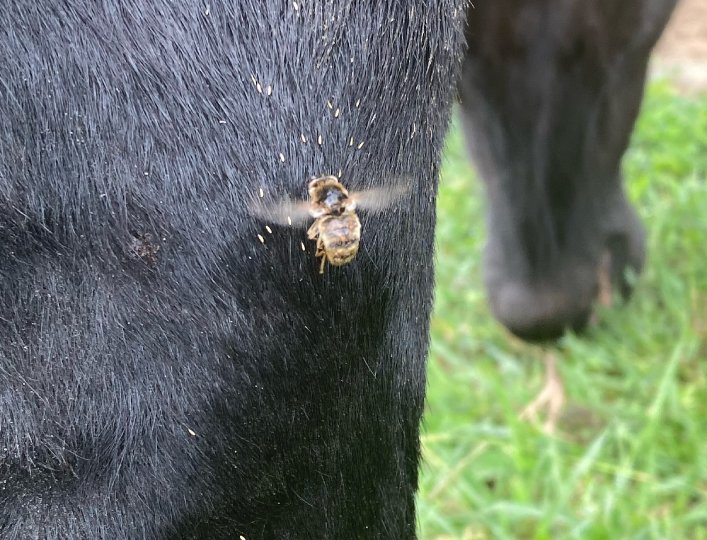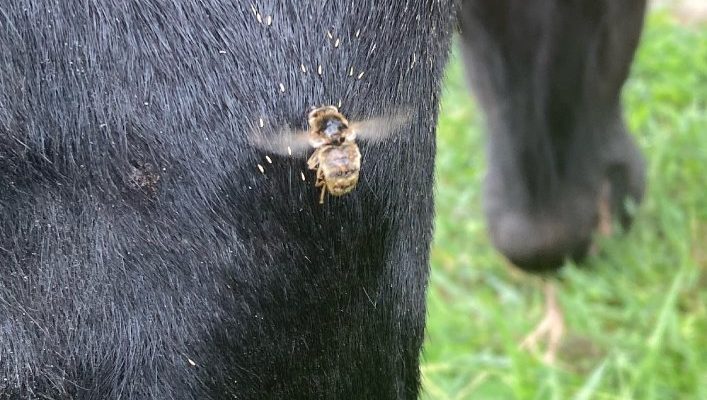
Botflies belong to the Oestridae family, and their reproductive habits are quite specific. Most notably, they don’t just lay their eggs randomly; they target the nests or burrows of various mammals. This strategic choice is intentional, as it maximizes their chances of hatching successful larvae. In this article, we’ll explore how botflies locate these burrows, the egg-laying process, and the fascinating journey of their larvae.
Understanding Botflies: The Basics
Botflies are known for their peculiar life cycle, which involves parasites and hosts. These flies are primarily known for their **larvae**, which live inside the bodies of mammals, including our pets. The adult botflies are mostly harmless, but their larvae can cause significant discomfort for their hosts. Here’s a bit more about what makes botflies unique:
- Appearance: Adult botflies are usually robust, fuzzy, and greyish or black. Their appearance can be quite intimidating.
- Behavior: Unlike many flies, botflies don’t simply buzz around. Instead, they tend to prefer quiet places where they can safely lay their eggs.
- Species Variety: There are several species of botflies, each with their own host preferences, which can range from rodents to deer.
You might be wondering why these flies choose specific hosts. Well, their life cycle hinges on finding the right environment for their larvae to thrive, and that often includes animal burrows.
Why Do Botflies Target Burrows?
Burrows are like a cozy hotel for botfly larvae. They provide a warm, safe environment rich in nutrients. Here’s why botflies specifically target these underground homes:
1. **Safety from Predators:** Burrows offer a protective barrier against predators. For an insect looking to ensure the survival of its offspring, this safe haven is vital.
2. **Proximity to Hosts:** Many burrowing animals are ideal hosts for botfly larvae. By depositing their eggs near these homes, botflies increase the likelihood that their larvae will find a suitable meal right away.
3. **Moist Environment:** The underground environment is often more humid than above ground, which is beneficial for the developing larvae that require moisture.
How Botflies Lay Their Eggs
The process of egg-laying for botflies is as intriguing as the insects themselves. Here’s how it usually unfolds:
– **Finding the Right Spot:** The female botfly actively searches for a burrow. This might involve circling the area to confirm that it’s the right place.
– **Egg Deposit:** Once she finds the perfect burrow, she lays her eggs just outside it, often on the body of a host animal that will wander nearby. It’s a strategic move, ensuring that the eggs can access a host quickly.
– **Hatching:** After a few days, the eggs hatch into larvae. They have a knack for detecting warmth and carbon dioxide, which helps them locate their new host.
The Journey of Botfly Larvae
Once the larvae enter their host, their journey of growth begins. Here’s what happens next:
1. **Invasion:** The botfly larvae will burrow into the skin of the host animal. This can be quite painful and uncomfortable for the host, as the larvae grow inside.
2. **Development:** As the larvae develop, they feed on the host’s tissue, growing larger over time. This phase can last several weeks, depending on the species and conditions.
3. **Emergence:** Eventually, when they’re ready to pupate, the larvae will emerge from the host’s skin. This can be quite shocking for the host, and it’s a critical step in the botfly’s life cycle.
The Impact on Hosts and Ecosystems
So, what’s the big deal about botflies? Their life cycle affects not just their hosts but also the surrounding ecosystem. Here are a few points to consider:
– **Health Risks for Hosts:** Infected animals can suffer from pain, infections, and even secondary complications due to the larvae feeding on their tissue. This not only affects individual animals but can also impact populations in the wild.
– **Ecosystem Balance:** Botflies play a role in keeping animal populations in check. By parasitizing certain hosts, they help maintain balance in the ecosystem, reflecting a delicate relationship between species.
– **Human Interaction:** As humans encroach on natural habitats, botfly infestations can affect domesticated animals, causing discomfort and economic loss for farmers and pet owners alike.
Preventing Botfly Infestations
If you’re concerned about botflies, whether for yourself, your pets, or livestock, here are some steps to consider:
– **Regular Checks:** If you own pets or livestock, conduct regular checks for signs of botfly larvae. If you spot a lump or if your pet shows signs of discomfort, it’s worth a vet visit.
– **Avoid Known Infestation Areas:** Keep animals away from areas where botflies are known to thrive, such as dense woods or animal burrowing sites.
– **Stay Informed:** Awareness is key. Knowing what botflies look like and understanding their life cycle can help in prevention.
Botflies may sound like something straight out of a science fiction novel, but they’re a natural part of many ecosystems. Their method of depositing eggs near animal burrows speaks to their evolutionary success. By understanding their lifecycle, we can better appreciate the complexities of nature and the various roles different creatures play. You might even find that the world of insects isn’t as scary as it seems—there’s plenty of fascinating science to discover!

